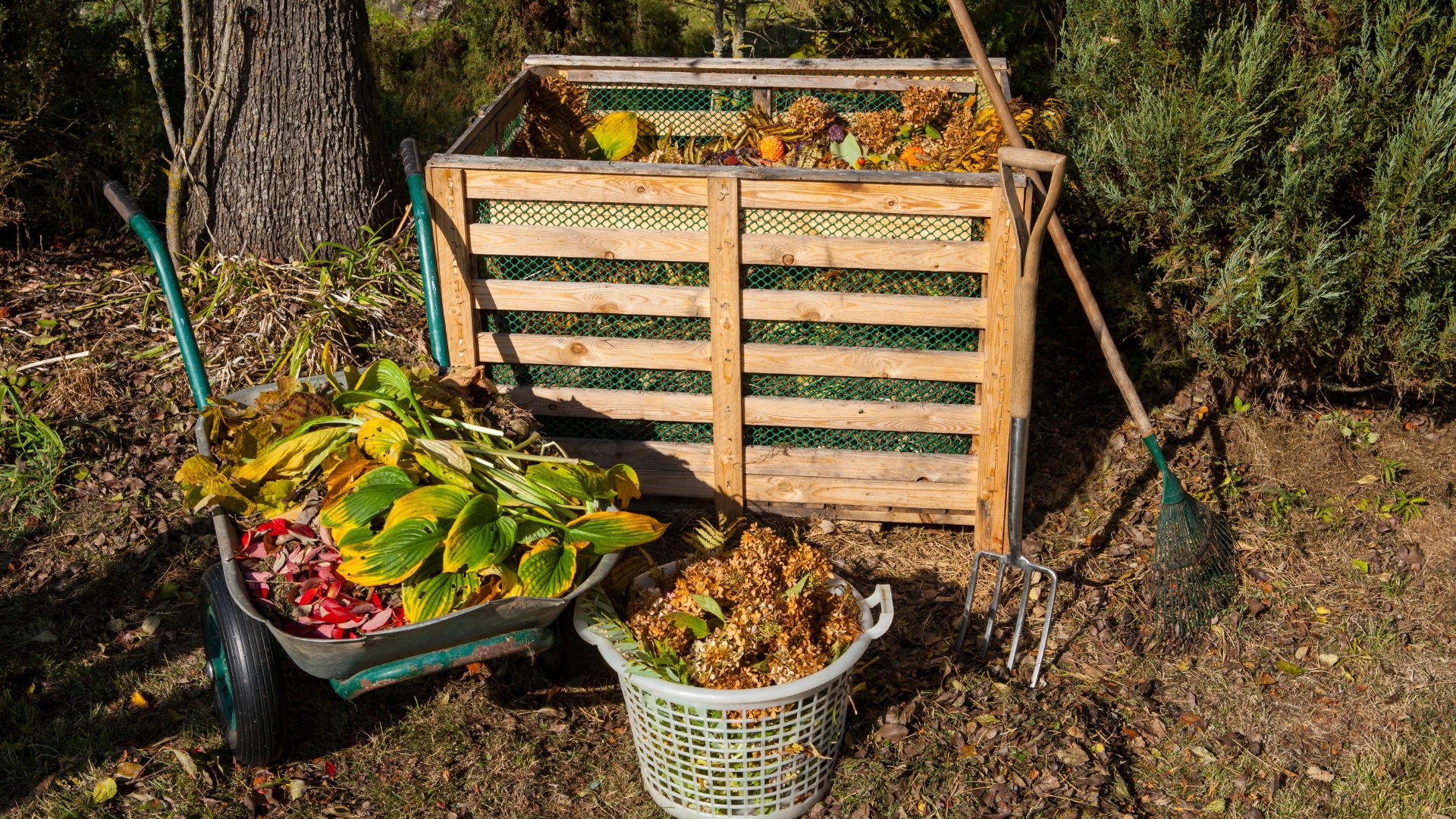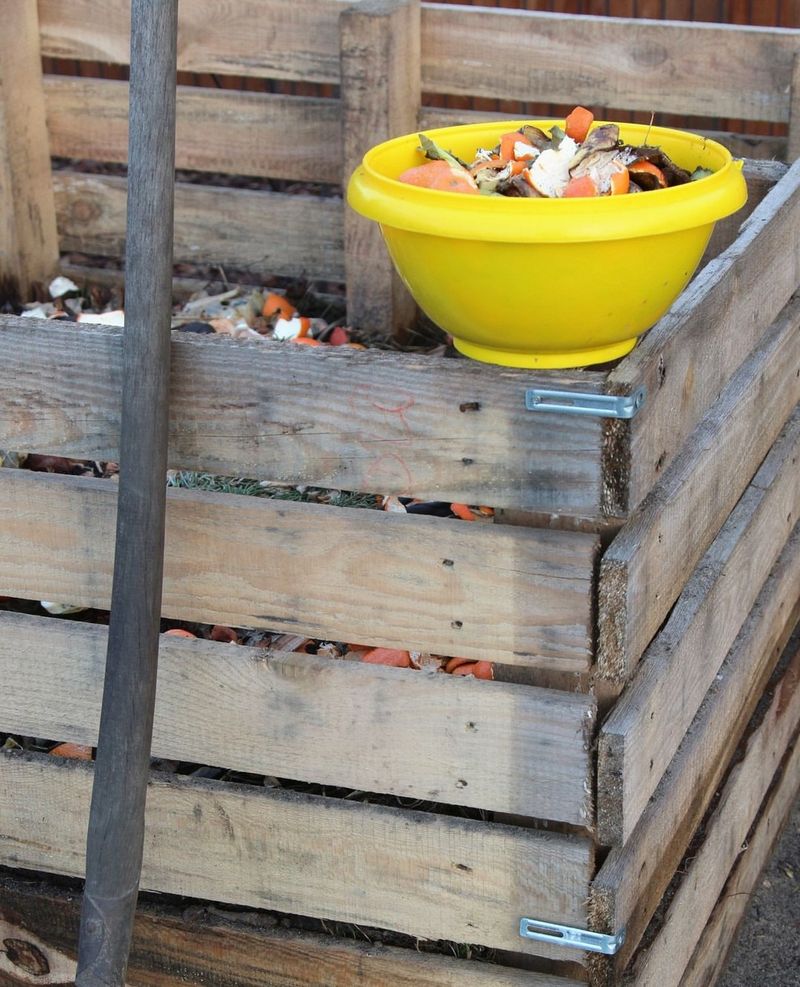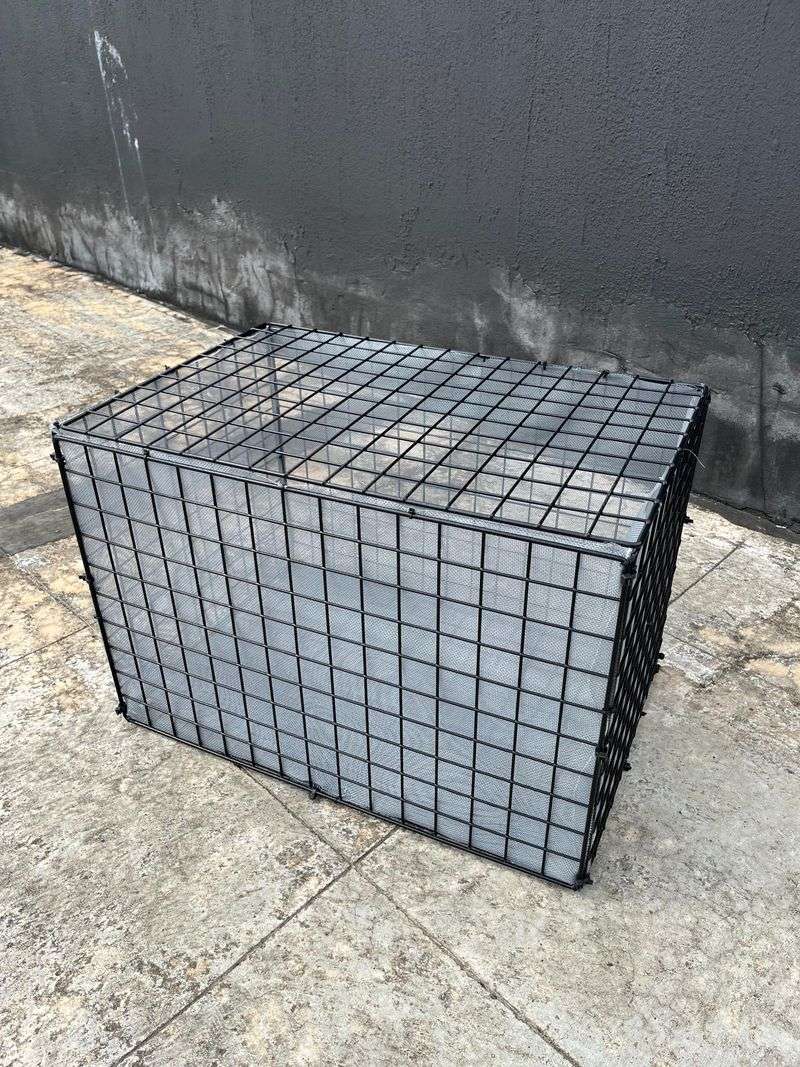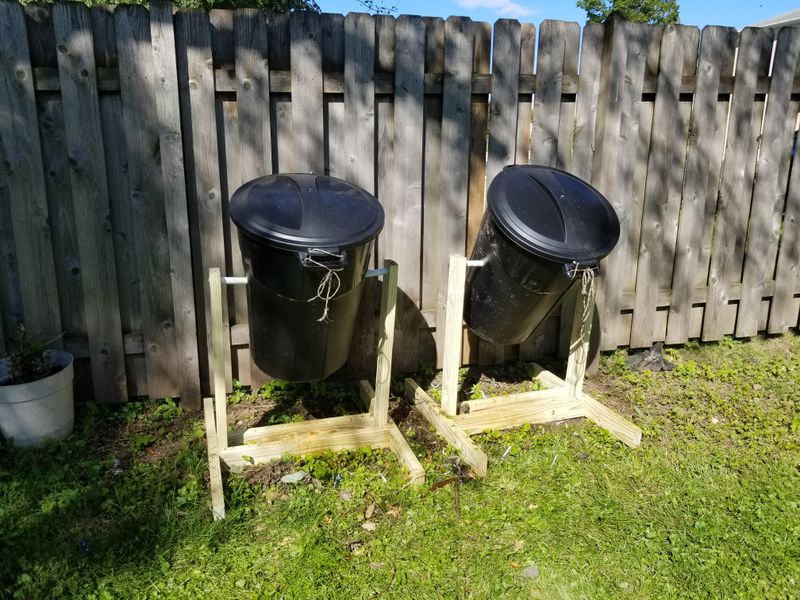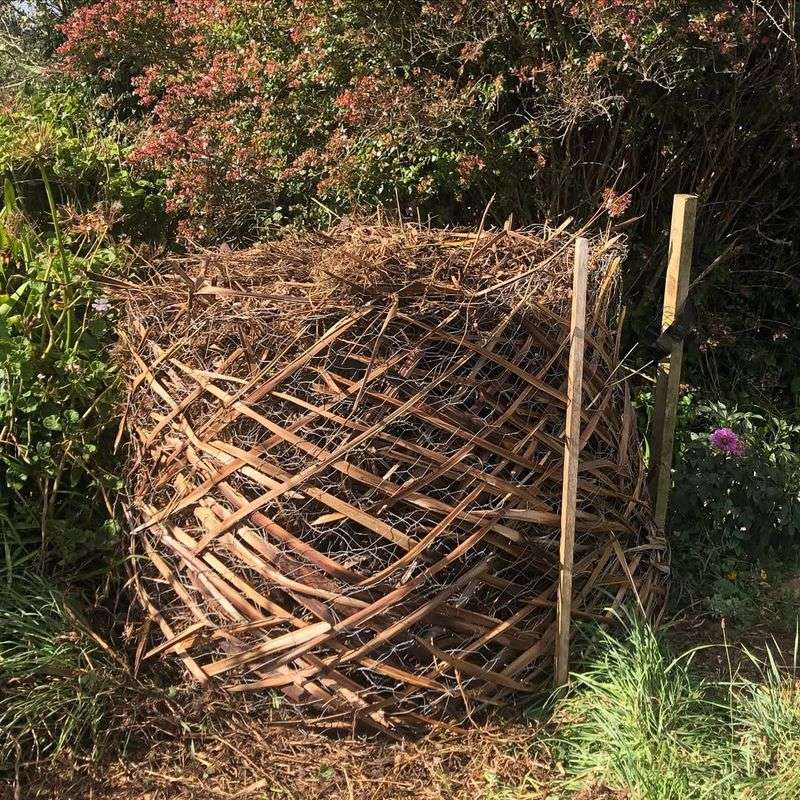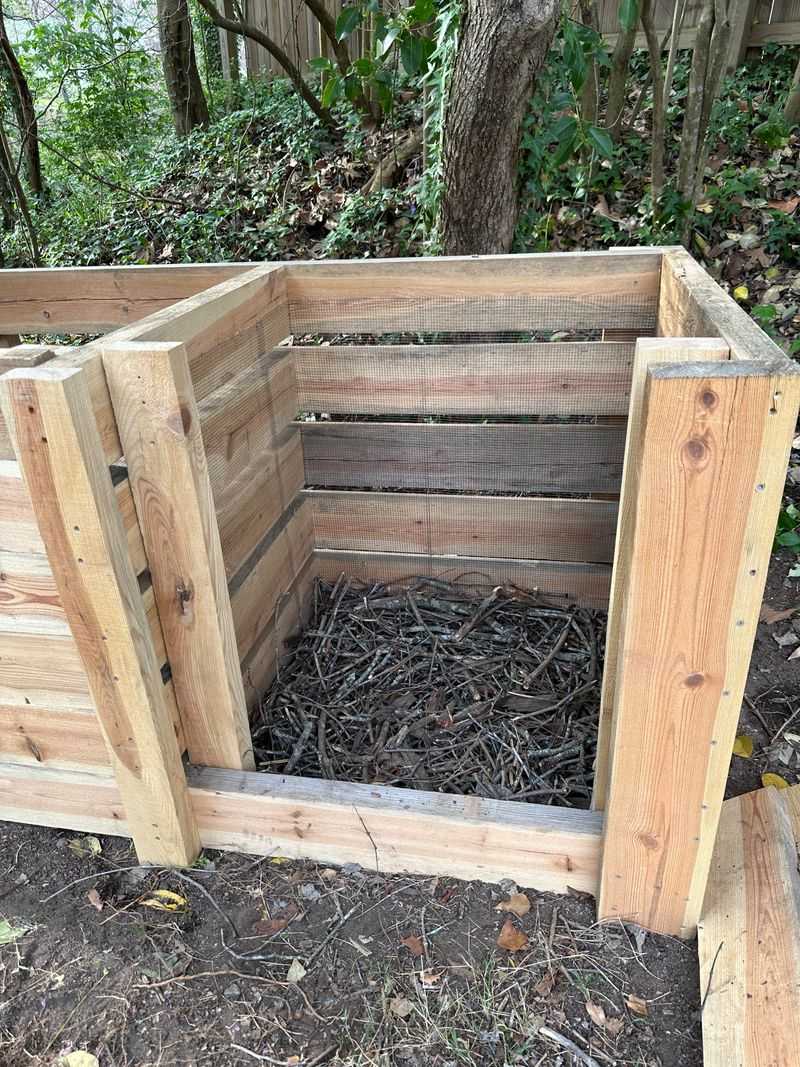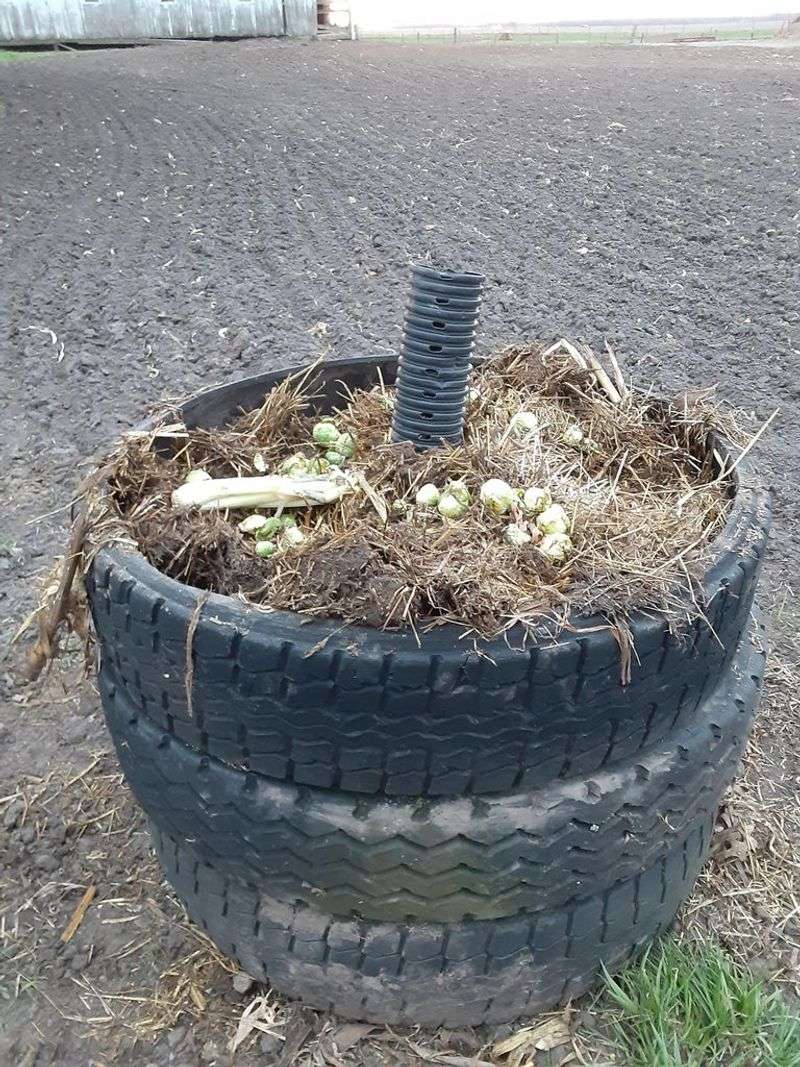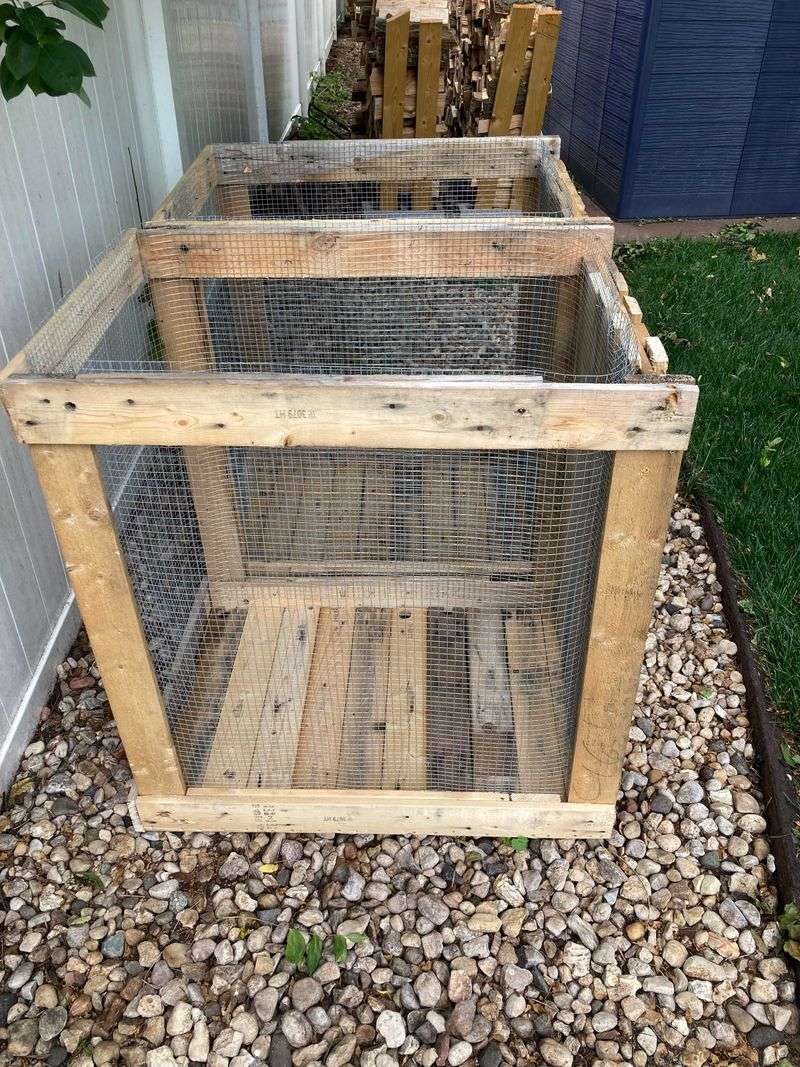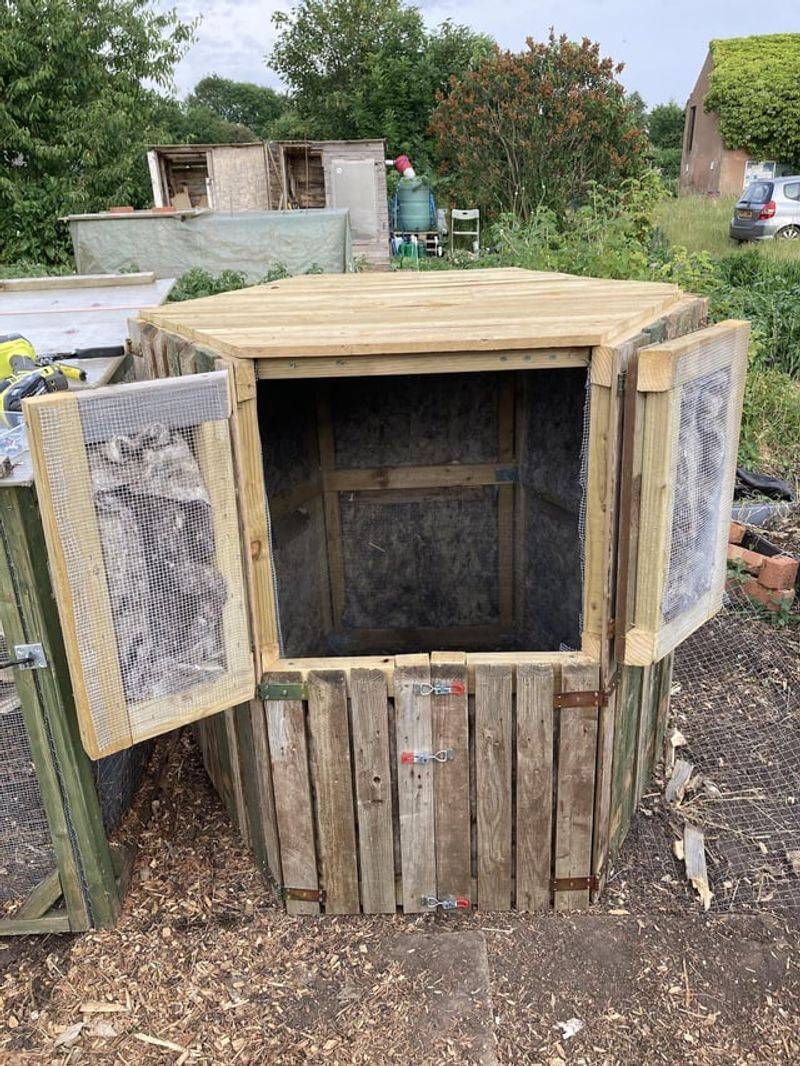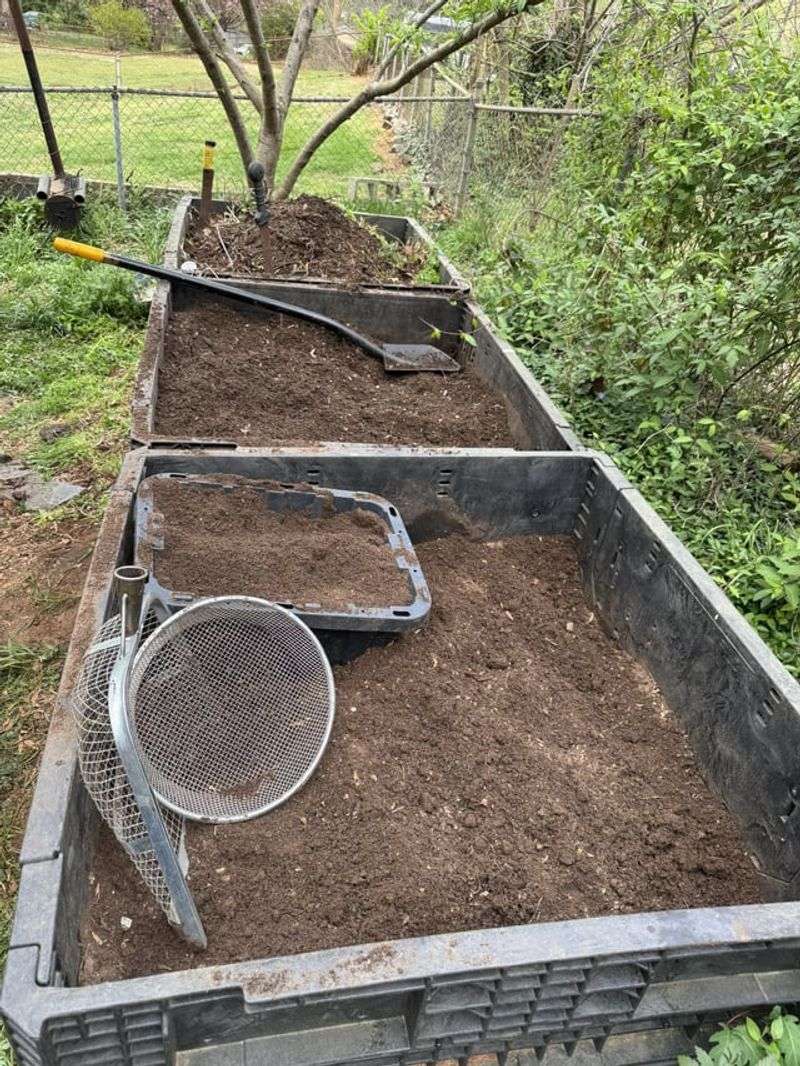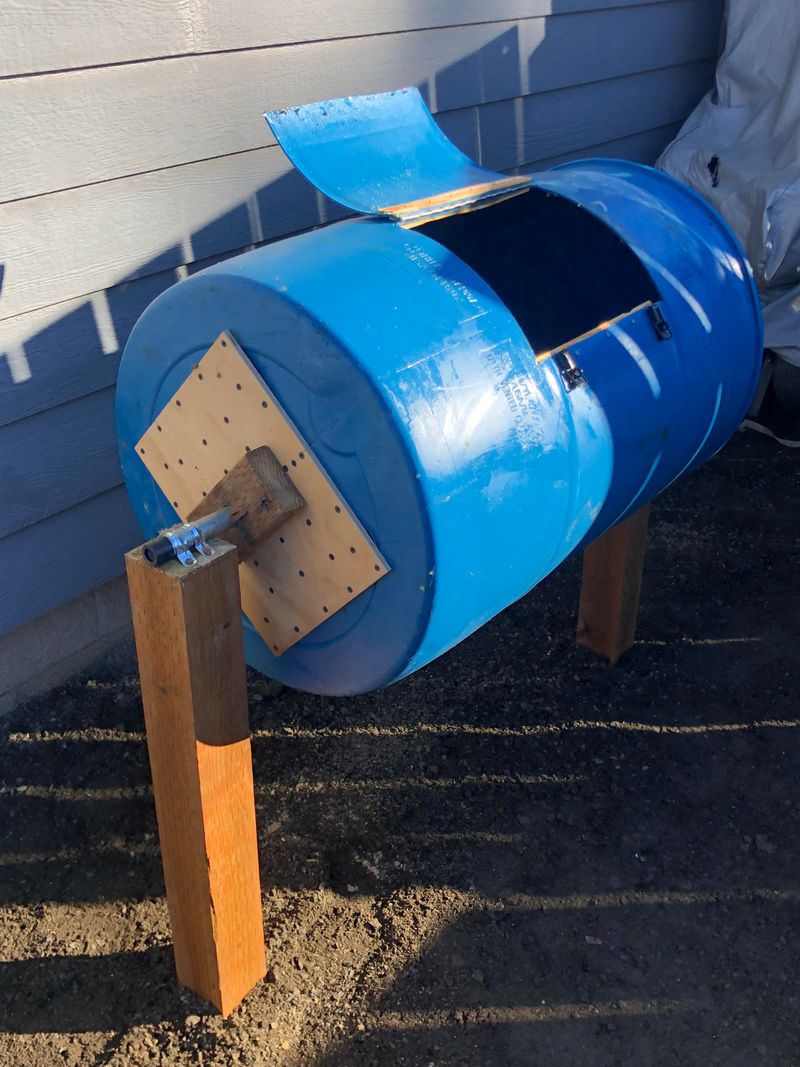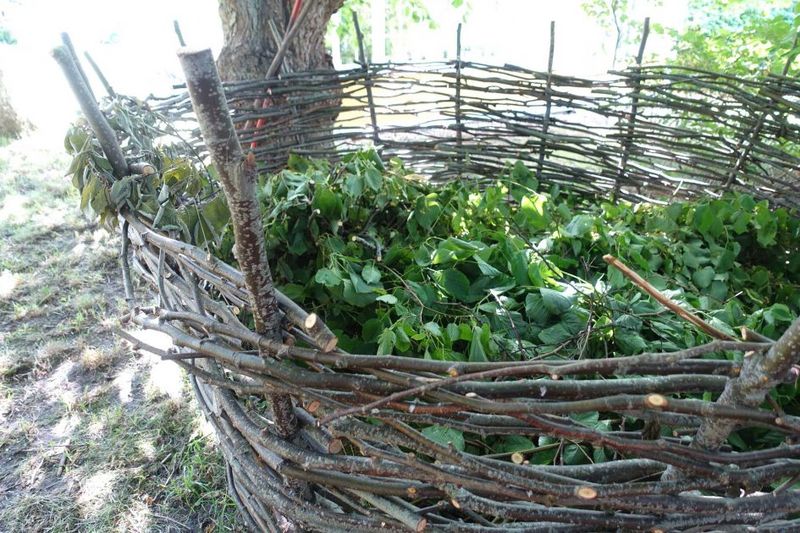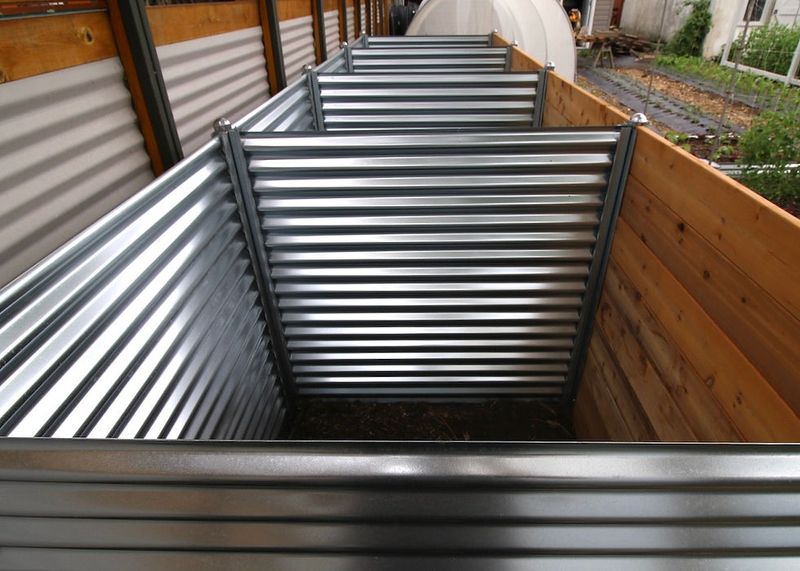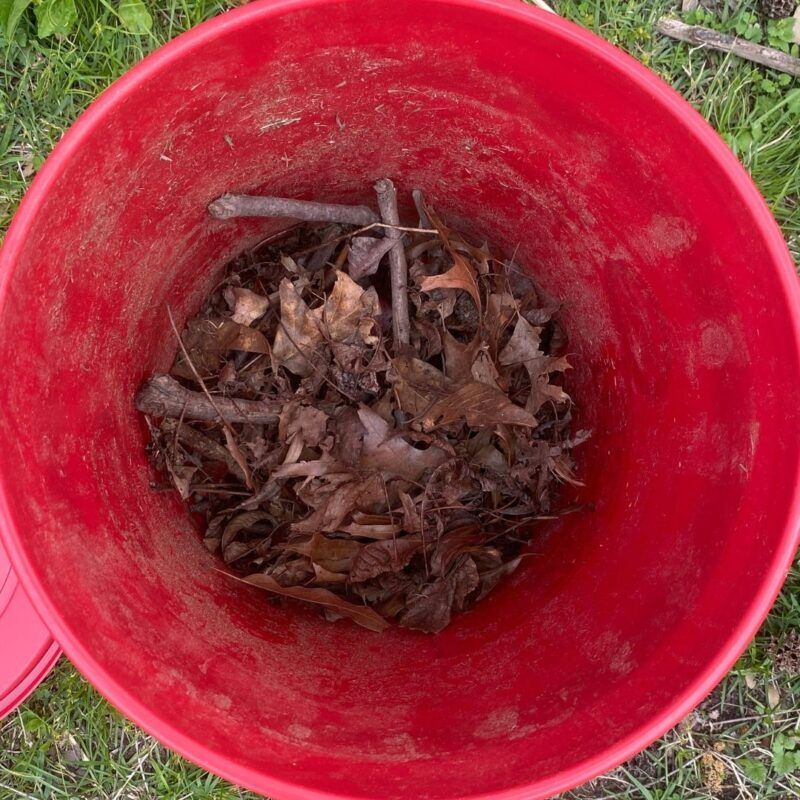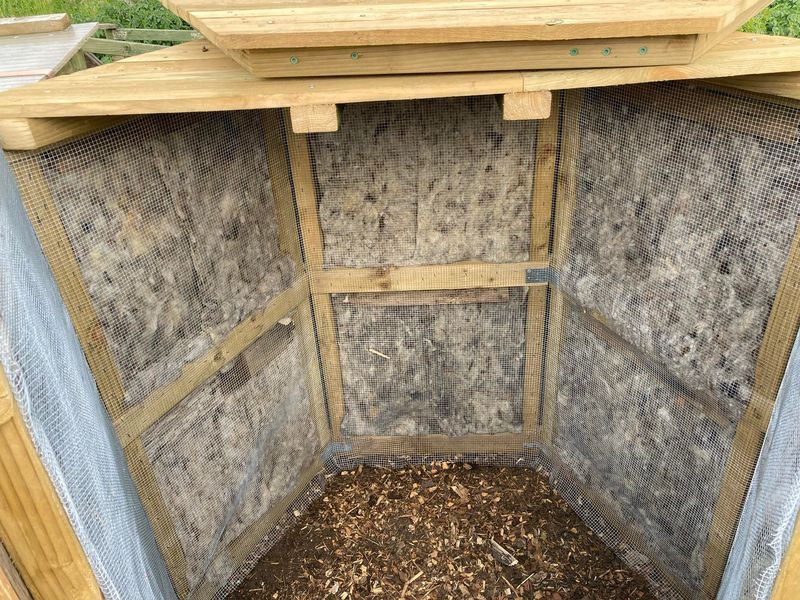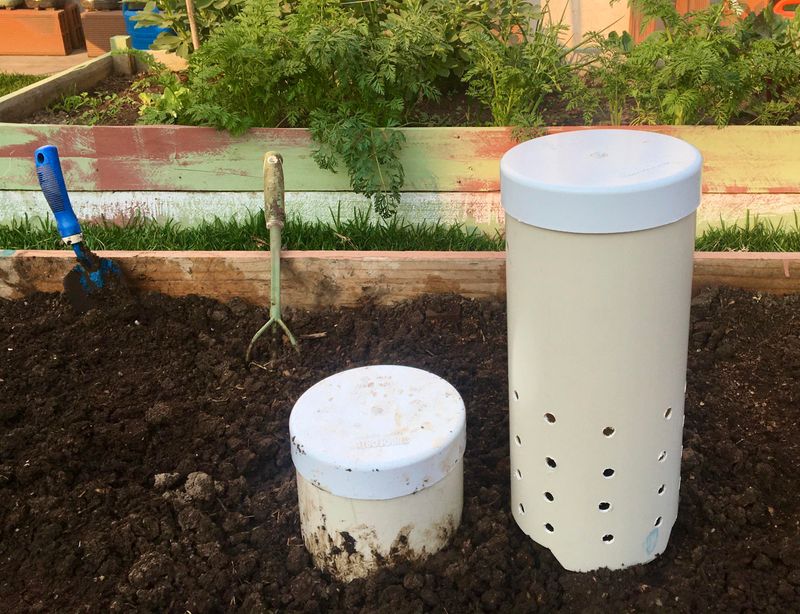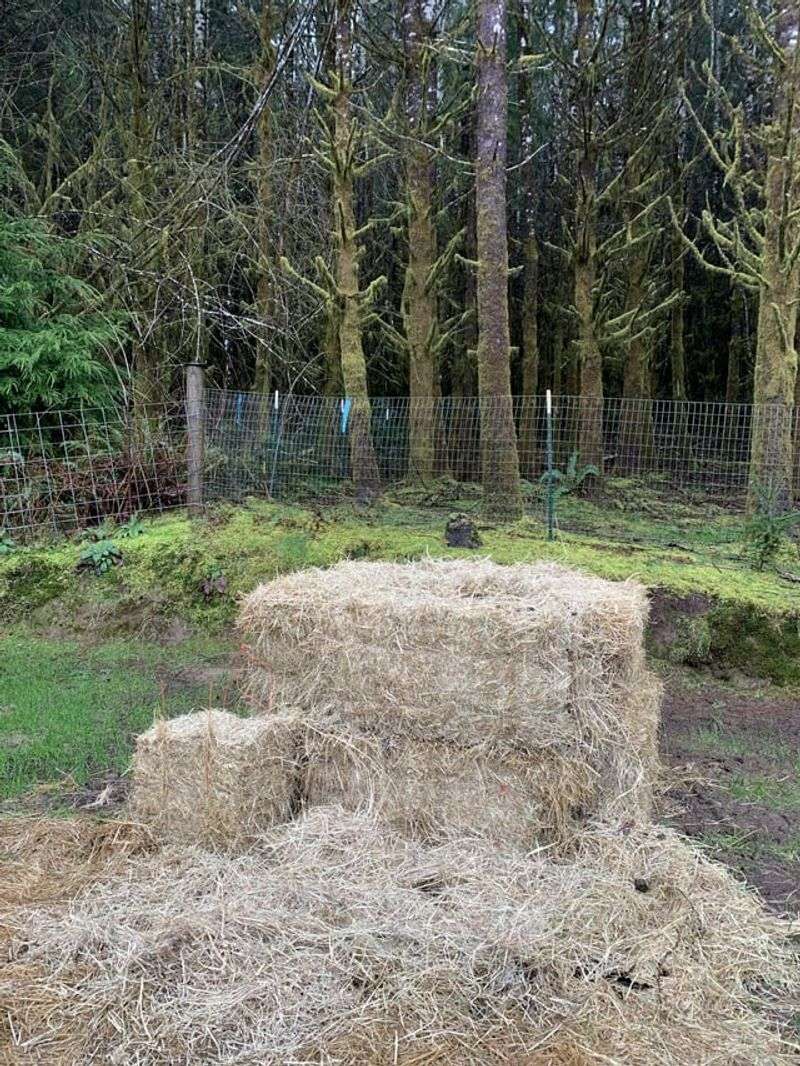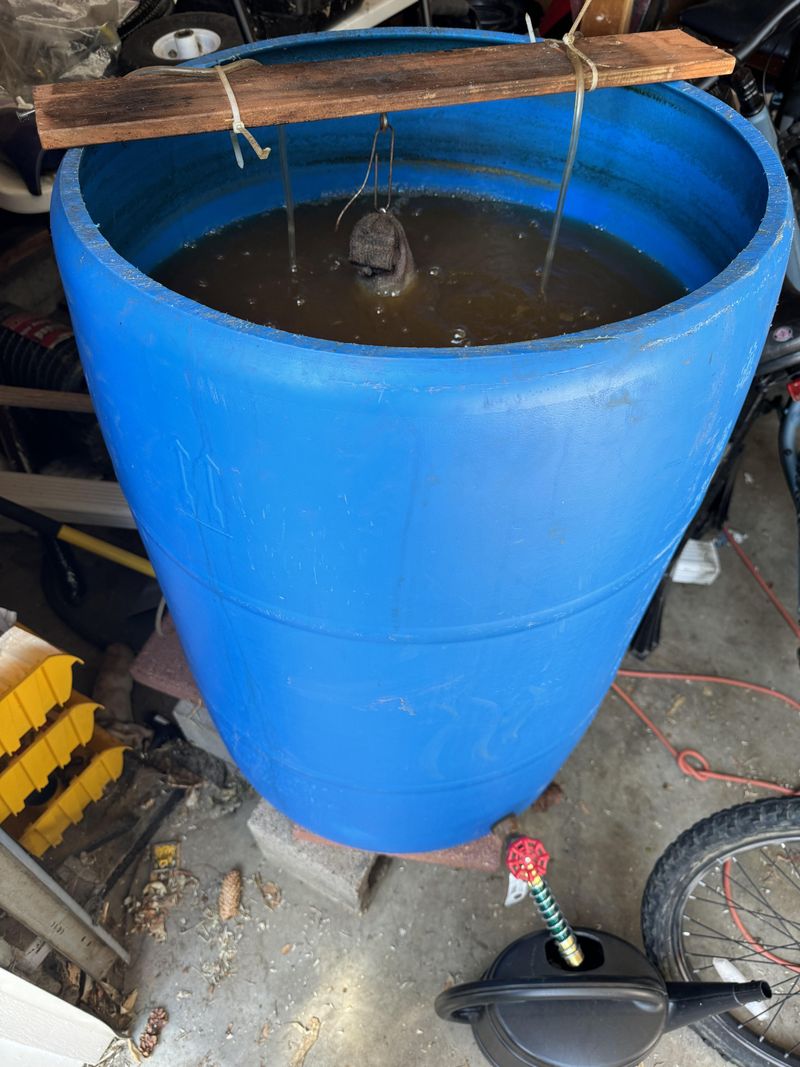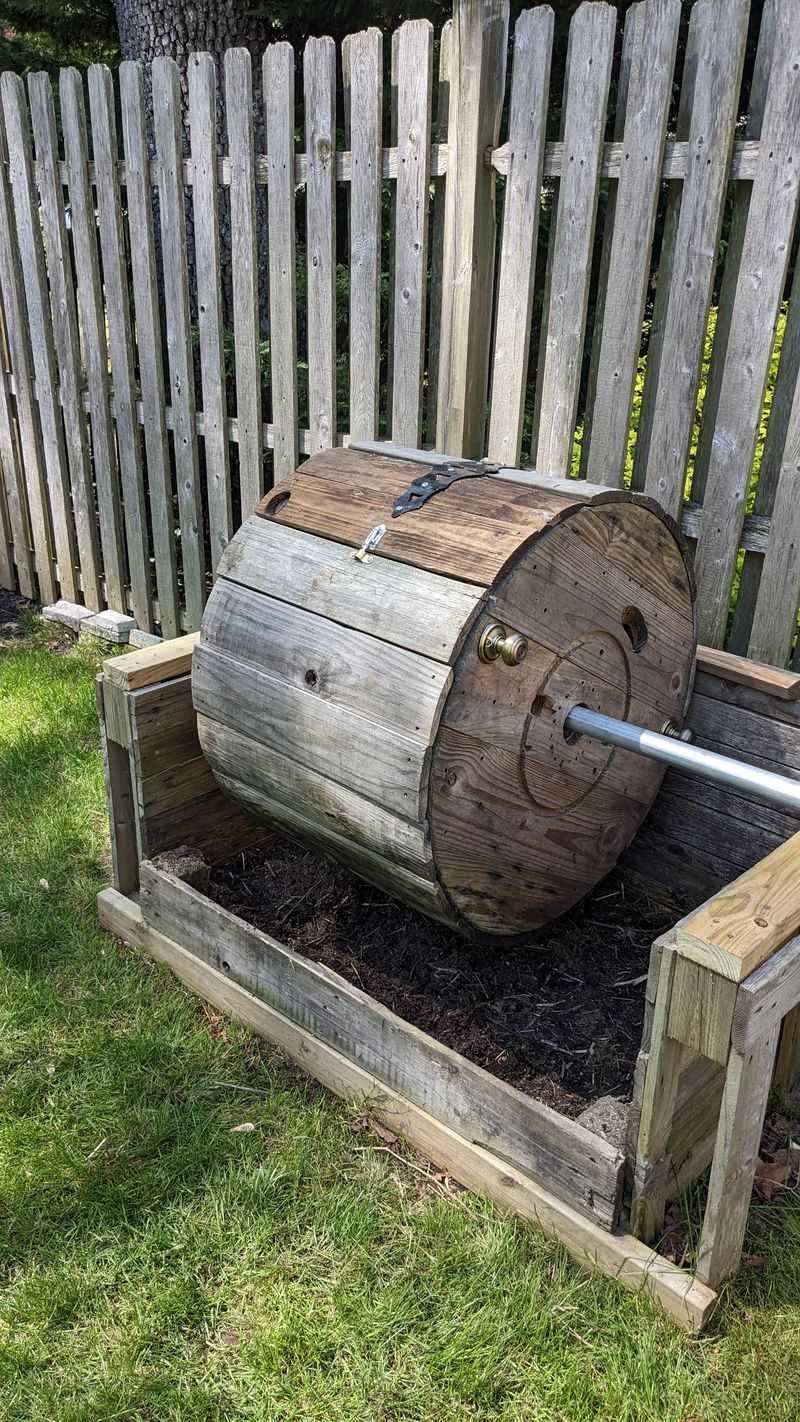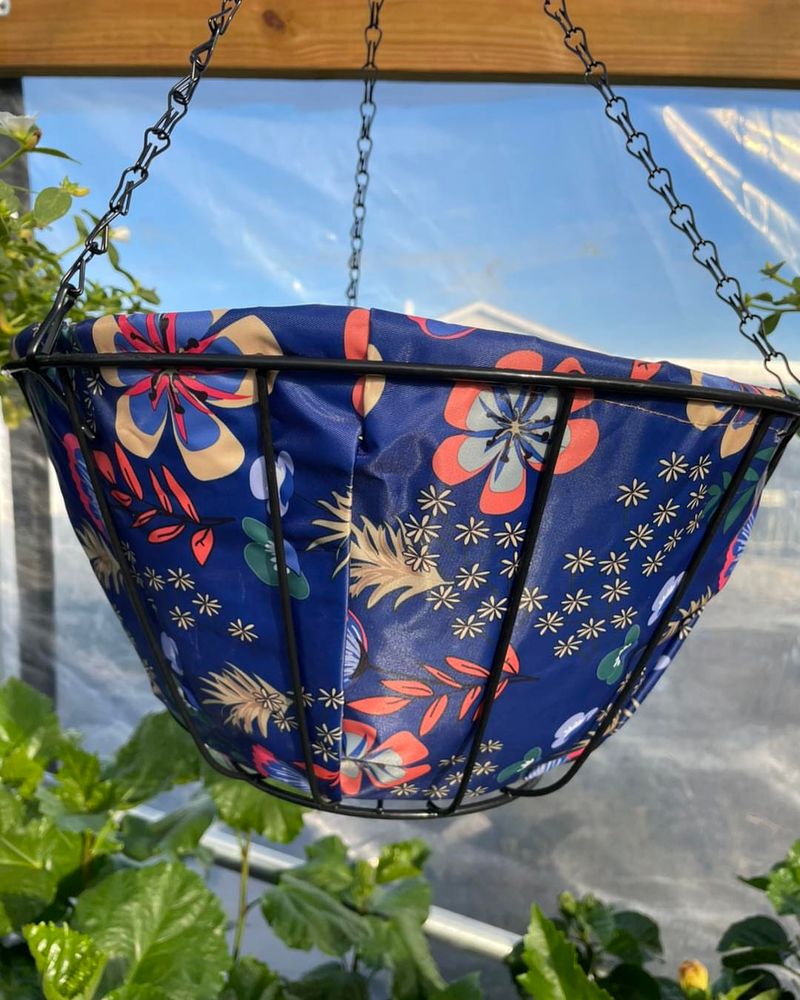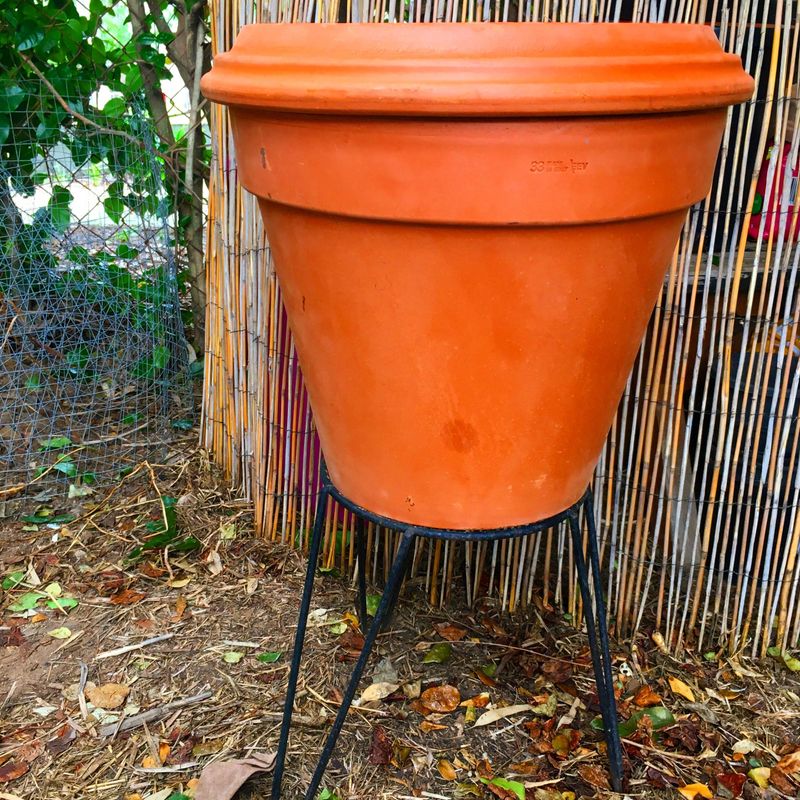Composting is not just a way to reduce waste; it’s a gateway to richer gardens and healthier plants. Creating your own compost bin is a rewarding project that brings you closer to nature while providing your garden with the nutrients it craves. From simple designs using common household items to more elaborate constructions, there’s a compost bin idea for every skill level and budget. Let’s explore some creative DIY compost bin ideas that’ll transform kitchen scraps into garden gold, all while adding a personal touch to your green space.
1. Simple Wooden Pallet Bin
Transform old wooden pallets into a rustic and effective compost bin. With just a few nails and some elbow grease, you can have a sturdy structure ready to turn your kitchen scraps into rich compost.
Wooden pallets are often free or very cheap, making this an affordable option. This design allows for good air circulation, which is key to efficient composting. Place it in a corner of your yard, and watch as your waste turns into black gold. Plus, it gives your garden a charming, rustic look.
2. Wire Mesh Cylinder
Crafting a wire mesh compost bin is as simple as it is efficient. All you need is some sturdy wire mesh and a few tools to shape it into a cylinder. This design is perfect for smaller spaces and allows for excellent aeration, speeding up the composting process.
It’s lightweight and easy to move, so you can find the perfect sunny spot in your garden. The exposed sides let you see the composting magic happen, making it a visually engaging addition to your garden.
3. Trash Can Compost Bin
Turning a basic trash can into a compost bin is both economical and effective. Simply drill holes into the sides and bottom to allow air flow.
This bin is great for beginners looking to try out composting without a big commitment. It’s compact, making it suitable for small yards or urban settings. The lid keeps pests out, while the holes ensure proper ventilation.
It’s a straightforward project that transforms a common household item into a compost-producing powerhouse.
4. Cinder Block Compost Bin
Cinder blocks provide a durable and modular option for building a compost bin. Their weight means they stay put, while their shape allows for easy stacking and customization. This type of bin is ideal for larger gardens and serious composters.
It holds heat well, accelerating decomposition. Plus, the blocks can be rearranged or expanded as needed, giving you flexibility. Despite their sturdiness, they blend into the garden landscape beautifully, providing a permanent composting solution.
5. Bamboo Compost Bin
For a touch of elegance in your garden, consider a bamboo compost bin. Bamboo is not only sustainable but also incredibly strong and lightweight. A compost bin made from bamboo slats can complement any garden style, especially if you’re aiming for a more natural, organic look.
This design allows for good airflow, essential for the composting process. It’s a DIY project that not only benefits your garden but also enhances its aesthetic appeal, creating a serene and eco-friendly space.
6. Open Slatted Wood Bin
An open slatted wood bin offers simplicity and efficiency in composting. With wood slats spaced apart, it provides excellent airflow, crucial for breaking down compost materials quickly.
This bin is easy to construct and can be made from reclaimed wood, making it both eco-friendly and economical. It’s perfect for those who prefer a down-to-earth look that blends seamlessly with the garden. As the compost piles up, you’ll enjoy watching your waste transform into something valuable for your plants.
7. Tire Tower Compost Bin
Repurposing old tires into a compost bin is both creative and practical. Stack the tires to create a tower, and fill it with your organic waste.
This design is particularly appealing for those who love to recycle and upcycle materials. It’s easy to add or remove tires as needed, allowing for flexibility in bin size.
Plus, the rubber retains heat, speeding up decomposition. This quirky setup adds a touch of whimsy to your garden while effectively transforming kitchen scraps into compost.
8. Chicken Wire Frame
A chicken wire frame is a lightweight and affordable option for creating a compost bin. Simply form the wire into a cylindrical or square shape and secure it with stakes.
It’s ideal for those who want a no-fuss, open-air composting solution. The ample ventilation provided by the wire facilitates quick decomposition.
This method is particularly suited for rural settings with lots of yard waste. It’s a functional and budget-friendly way to enrich your soil with minimal effort.
9. Wood and Wire Combo Bin
Combine the strength of wood with the ventilation of wire to create a versatile compost bin. This hybrid design offers the best of both worlds: durability and efficient airflow. It can be customized in size and shape to fit the specific needs of your garden.
This bin is particularly effective in maintaining the ideal conditions for composting, making it a favorite among avid gardeners. Its rustic yet functional appearance makes it a charming addition to any garden landscape.
10. Plastic Storage Bin Compost
Turning a plastic storage bin into a compost bin is perfect for urban gardeners. Drill holes in the sides and bottom for ventilation and drainage.
It’s compact, budget-friendly, and fits well in small spaces like balconies or patios. This bin keeps pests away while the lid helps retain heat, speeding up decomposition.
It’s an easy entry into composting for those with limited outdoor space. Plus, it’s a low-maintenance solution that efficiently turns food scraps into valuable compost.
11. Log Cabin Style Bin
Craft a charming log cabin style compost bin using fallen branches or logs. This design not only holds compost but also adds a rustic aesthetic to your garden.
The gaps between logs allow for necessary airflow, promoting quick decomposition. It’s an eco-friendly project that repurposes natural materials, making it a sustainable choice for gardeners.
As the bin fills, it blends seamlessly into its natural surroundings, providing a functional and attractive solution for composting.
12. Upcycled Crate Compost Bin
Transform old wooden crates into a charming compost bin. Stack and secure them to create a sturdy and stylish composting structure.
This design is perfect for those who love giving new life to old items. The gaps in the crates provide good air circulation, essential for effective composting.
This bin is not only practical but also adds a rustic touch to your garden. It’s a great way to recycle while turning waste into a resource, all within a compact and appealing setup.
13. Stone Enclosure Bin
For a natural and durable composting option, consider building a stone enclosure bin. Use flat stones to construct a circular or square enclosure.
This design is visually striking and blends beautifully with the garden landscape. The stones retain heat, aiding in the decomposition process, while their weight ensures the bin stays put.
It’s an excellent choice for gardeners who want a long-lasting and aesthetically pleasing composting solution. As organic materials break down, the bin becomes an integral part of the garden.
14. Portable Tumbler Bin
A portable tumbler bin takes composting to the next level with its convenience and efficiency. This modern design features a rotating drum, making it easy to mix and aerate the compost.
It’s perfect for small gardens or patios, providing a neat, contained solution that speeds up composting. The ability to easily turn the compost means faster decomposition and minimal effort.
Its compact design and functionality make it a popular choice for urban gardeners who want to compost without the mess.
15. Woven Willow Bin
Weaving a compost bin from willow branches creates a beautiful and effective composting space. This traditional technique not only looks artistic but also allows for ample air circulation.
Willow is flexible and strong, making it ideal for crafting a durable bin. It’s a project that adds a touch of craftsmanship to your garden, providing a unique and functional composting solution.
The natural materials blend seamlessly with the landscape, enhancing the overall beauty of your outdoor space.
16. Galvanized Steel Bin
For a sleek and modern touch, a galvanized steel compost bin is an excellent choice. Its sturdy construction withstands the elements, making it a long-lasting option for any garden.
The steel conducts heat well, accelerating the composting process. This bin is ideal for those who prefer a low-maintenance solution that doesn’t compromise on style.
Its clean lines and durable materials make it a standout feature in both traditional and modern garden settings, turning waste into compost with elegance.
17. Repurposed Refrigerator Bin
Give an old refrigerator a new lease on life by turning it into a compost bin. This unusual but effective solution provides an insulated environment for composting.
Remove the doors for easy access and drill holes for ventilation. It’s a quirky project that makes use of large appliances otherwise destined for the landfill. This bin provides ample space for a substantial amount of organic waste, making it perfect for those with large gardens.
It’s an inventive way to recycle while nurturing your garden.
18. Hexagonal Wood Bin
A hexagonal wood compost bin adds a geometric flair to your garden. It’s a bit more complex to build, but the result is a visually interesting and efficient composting system.
The six sides provide stability and ample space for airflow, essential for effective composting. This design is perfect for gardeners who enjoy crafting and want a standout piece in their outdoor space.
It’s an excellent conversation starter that combines functionality with artistic design, making composting a stylish affair.
19. PVC Pipe Bin
Large PVC pipes can be ingeniously repurposed into a functional compost bin. Cut the pipes into sections and assemble them into a bin structure.
This design allows for vertical composting, saving space while providing efficient air circulation. It’s particularly suitable for small gardens or urban areas where space is at a premium.
The durable material withstands the elements, ensuring longevity. It’s a modern, minimalist approach to composting that turns an everyday material into a garden asset.
20. Straw Bale Bin
Using straw bales to create a compost bin is an eco-friendly and temporary option. Arrange the bales in a square or circle to form the bin walls.
Over time, the straw itself will decompose, adding to the composting process. This setup is ideal for those looking for a seasonal or moveable composting solution.
It’s an approach that aligns well with permaculture principles, offering both a functional and biodegradable way to manage organic waste. As the bales break down, they enrich the soil further.
21. Rain Barrel Bin
Convert an old rain barrel into a compost bin to take advantage of its size and shape. Drill holes for ventilation and add a lid for pest control.
This method is perfect for gardeners who want to repurpose existing materials. The barrel offers enough space for a sizable amount of organic waste while keeping everything contained and tidy.
It’s a straightforward project that provides an efficient composting system with a focus on sustainability and resourcefulness, turning waste into a garden treasure.
22. Rotating Drum Bin
A rotating drum compost bin simplifies the composting process with its ease of use. The drum can be turned regularly to aerate and mix the compost, which speeds up decomposition.
It’s an excellent choice for those who want to keep composting efficient and contained. This design is particularly popular among urban gardeners who need a compact and clean solution.
With its modern look and functional design, it’s a practical and stylish way to generate your own nutrient-rich compost at home.
23. Hanging Basket Bin
For a unique vertical composting solution, consider using hanging baskets. This setup is perfect for small spaces or urban gardens where ground space is limited.
The baskets allow for excellent air circulation and can be easily moved or adjusted as needed. This method not only saves space but also adds an interesting visual element to your garden.
It’s a creative way to handle organic waste, turning scraps into compost in a manner that’s both efficient and aesthetically pleasing.
24. Clay Pot Compost Bin
Using clay pots as compost bins is an ancient method that still proves effective today. The terracotta material helps regulate moisture and temperature, making it ideal for composting. Arrange the pots in a cluster or line them up for easy access.
This method is perfect for those who appreciate traditional gardening techniques and want to add a touch of history to their garden. It’s a durable and attractive option that blends seamlessly with various garden styles, transforming waste into a valuable resource.

